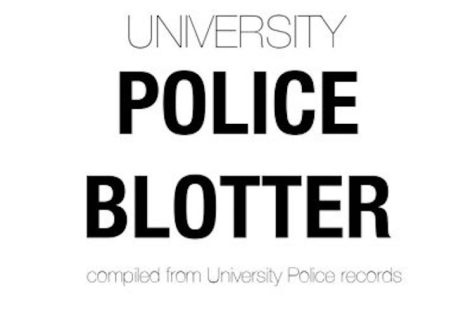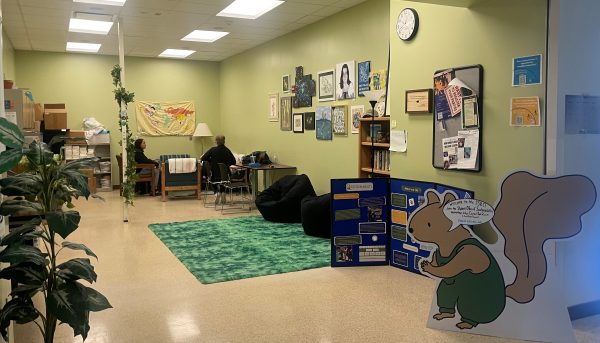By any other name
Students enrolled in the history course, museums in the United States have spent their semester creating an exhibit that follows the university through its five different names since its founding in 1916. The exhibit is being displayed in the cases in the entryway to McIntyre Library.
UW-Eau Claire began as the Eau Claire State Normal School and consisted of only one building. It was ultimately integrated into the UW System as
UW-Eau Claire in 1972.
Changes in the name are accompanied by tidbits of student life in each of the eras. Students in the history class were in charge of finding relics to embody each of the time periods, said Erin Devlin, the class’ professor. For example, during World War II, the college served as a training center for Army aviation cadets.
“It has this chronological trajectory, but it has this layer of student life from the grassroots and what the student experience was like at different periods of time,” she said.
Graduate and undergraduate students in her class were completely in charge of researching, develop and promoting the exhibit, Devlin said. One of the graduate research groups pitched the “What’s in a Name?” idea, and the rest of the class voted it as their theme for the exhibit.
“In order to empower students, you have to give them some control over the process,” Devlin said. “My job is to provide the framework … but I try to put them in the driver’s seat as much as I can.”
As a public history professor, Devlin said many of her classes are about what historians do for public audiences. She said she wanted students to know what it was like to create an exhibit similar to what would be seen in a museum.
Jessica Riege, one of the graduate students enrolled in the course, is working toward a master’s degree in history with an emphasis in public history. Her time in the class will translate well to her professional life, she said.
“Getting that experience is really beneficial, especially because this is what I want to do for a career,” Riege said.
Sara Schultz, another history student enrolled in the class, was a member of the design team. She was a part of the final stage, choosing the material for the exhibit and putting it together, she said.
Schultz said she learned a lot about the technology and materials it takes to put an exhibit together. Her experience though, ran a little deeper, she said.
“It gives you a sense of worth … knowing you are part of this huge history that has really evolved,” Schultz said. “There are great things that have happened at UWEC that we should all be proud of and it’s worth taking a look at.”
Two cases in the library house the exhibit, with a river flowing between the them, symbolizing the two sections of campus and the Chippewa River. Students visiting the exhibit can write which era they would like to live in, on the river.
Student interaction in the exhibit is an important element, Devlin said. Traditionally, museums were like institutions, she said. Now, Devlin said, they have transformed into a forum, a place for discussion.
The class is using Facebook and Twitter to further interact with students who see the exhibit, Devlin said. Students can answer trivia questions posted in order to win Eau Claire-themed prizes, she said. She also said social media will play a huge part in chronicling this era of the university.
“What we want students to do now is add their part in,” Devlin said. “What does it mean to you to be a Blugold?’ How is our era defined?”






